Hands On With the Samsung Galaxy Note 5 and Samsung Galaxy S6 edge+
by Joshua Ho on August 13, 2015 11:00 AM EST- Posted in
- Smartphones
- Samsung
- Galaxy
- Mobile
- Galaxy Note 5
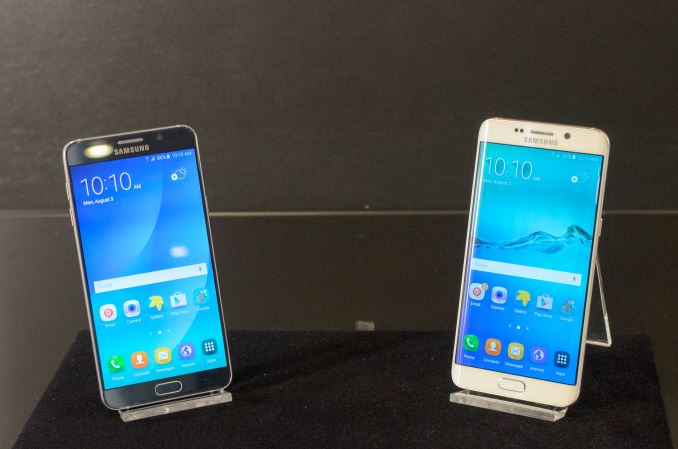
Today, Samsung is announcing the next generation of their Galaxy-brand phablets, the Galaxy Note 5 and the Galaxy S6 edge+. Samsung’s phablets have been one of their greatest smartphone success stories, finding traction in a market when many thought there wouldn’t be a place for such a large phone. And while you will never see some competitors directly admit to it, products like the Note series have legitimized the phablet form factor and required that the competition catch up as well, making the phablet form factor as much of a home court for Samsung as there can be.
Starting with their 2014 models, Samsung introduced two different phablets, the Galaxy Note 4 and the simply titled Galaxy Note Edge. This year Samsung is retaining the dual phablet approach, however in the case of the Edge product Samsung has shifted gears on what they want to do. For 2015 Samsung seems to be going after a new audience in the form of the Galaxy S6 edge+, which is a more distinct derivative of the Note 5 platform with some greater feature changes than just a curved screen. To try and explain what I mean, I’ve included the specs below.
Galaxy S6 edge+ |
Galaxy Note 5 |
|
| SoC | Samsung LSI Exynos 7420 4xA57 @ 2.1GHz 4xA53 @ 1.5GHz |
Samsung LSI Exynos 7420 4xA57 @ 2.1GHz 4xA53 @ 1.5GHz |
| GPU | Mali T760MP8 @ 772MHz | Mali T760MP8 @ 772MHz |
| RAM | 4GB LPDDR4 | 4GB LPDDR4 |
| NAND | 32/64GB UFS 2.0 | 32/64/128GB UFS 2.0 |
| Display | 5.7-inch 2560x1440 SAMOLED Dual edge display |
5.7-inch 2560x1440 SAMOLED |
| Network | 2G / 3G / 4G UE Category 6/9 LTE |
2G / 3G / 4G UE Category 6/9 LTE |
| Dimensions | 154.4 x 75.8 x 6.9 mm 153 grams |
153.2 x 76.1 x 7.6 mm 171 grams |
| Camera | 16MP rear camera, 1.12 µm pixels, 1/2.6" CMOS size, F/1.9. OIS 5MP F/1.9 FFC |
16MP rear camera, 1.12µm pixels, 1/2.6" CMOS size F/1.9, OIS 5MP F/1.9 FFC |
| Battery | 3000 mAh (11.55 Wh) non-removable |
3000 mAh (11.55 Wh) non-removable |
| OS | Android 5.1 with TouchWiz (At launch) | Android 5.1 with TouchWiz (At launch) |
| Connectivity | 2x2 802.11a/b/g/n/ac + BT 4.2, USB2.0, GPS/GNSS, NFC | 2x2 802.11a/b/g/n/ac + BT 4.2, USB2.0, GPS/GNSS, NFC |
| SIM Size | NanoSIM | NanoSIM |
As one can see, the Galaxy Note 5 and Galaxy S6 edge+ share a lot in common. They have the same SoC, same amount of DRAM, almost identical displays, the same cameras, fingerprint scanners, and the same battery. Ultimately what differs between the two devices is not the underlying hardware, but the functionality and form factor of the devices.
There are really two important differences between the two, namely the removal of the S-Pen and addition of the curved display to the Galaxy S6 edge+. The result is that while the Galaxy Note 5 is a traditional Note phablet, the Galaxy S6 edge+ is closer to a very large Galaxy S6 edge, and this is why these two closely related devices are placed in very different product lines. In some ways, I suspect that this will be a litmus test for the S-Pen functionality in general, as sales may prove Note functionality has a relatively small effect on the desirability of a phablet.
Design
Moving past the distinction between the two models, the Galaxy Note 5 and Galaxy S6 edge+ share very similar industrial and material design. The bezel surrounding the display and the back cover both continue to use the highly reflective patterning that we first saw with the Galaxy S6, and in the case of the Galaxy Note 5 the bezel surrounding the display has become even thinner than before. Like the Galaxy S6 edge, the plus variant has bezels that are effectively equivalent to the Galaxy Note 5 as the angle reduces the effective size of the technically larger bezel.
With the Galaxy S6, there was a noticeable distinction between the normal version and the edge variant when it came to in-hand feel as the standard version was significantly thicker on the left and right sides of the phone. With the Galaxy Note 5, this difference is lessened, but the difference in in-hand comfort definitely remains. The big driver for this is the use of 3D glass on the back cover of the Galaxy Note 5, which allows for a more ergonomic design in the hand. I can’t help but compare this to the first phablet that I’ve seen with a 3D glass back cover, namely the Xiaomi Mi Note line, which feels remarkably similar. At any rate, the Note 5 seems to remain more ergonomic than the edge variant, which has a flat back but a curved display.
S-Pen
One of the major updates changes to the Galaxy Note 5 is improvements on the S-Pen, which has a number of new changes to the design and software functionality. On the hardware side, the pen itself now has a changed mechanism that has a push button top that allows the pen to be completely flush inside the phone when not in use, but easily ejected by pushing on the top of the pen to make it protrude. The digitizer also has dramatically reduced latency. In my experience, this helps a lot with making writing more natural on the Note 5 as I don’t hesitate as much while waiting for the input to catch up.
On the software side, Samsung has added a host of notable additions to extend the functionality of the S-Pen, namely PDF annotation, an Air command floating button, customizable shortcuts, and scroll capture. PDF annotation sounds exactly like what you might expect, which is the ability to write directly on a PDF and save the results. This has obvious utility in cases like signing documents, as the user experience involved in digitally signing a document is horrific and usually goes something like printing out a PDF, signing the PDF, and scanning the signed document. In the case of the Note 5, signing a document is pretty much as easy as opening the PDF with the right application, writing a signature with the S-Pen, and saving the changes.
Meanwhile the Air command floating button and customizable shortcuts are somewhat more mundane. The floating button just allows for one-tap access to what was previously hidden behind the button press of the pen, and customizable shortcuts in the Air command menu is useful but not exactly life-changing.
Scroll capture is also arguably a “minor” feature, but I would argue that its value is significant when it comes to improving the user experience of the phone. In short, this screenshot mode makes it possible to screenshot a long list in an entire screenshot, so something like Google Maps directions can be taken as a single scrollable screenshot rather than 2-20 screenshots that might have overlapping information and potentially missing information from the ListView. However, as far as I can tell this capture mode is strangely hidden behind S-Pen functionality when it really should be integrated into the existing screenshot capture gestures that programmatically determines whether to present this scroll capture mode.
Camera
Although the camera configuration is unchanged from the Galaxy S6 with an IMX240 or S5K2P2 camera sensor, f/1.9 optics and a 5MP FFC, there are some new and interesting features present in the camera application. One notable additional is improved pro mode, with extended ISO range down to 50 ISO and the addition of a shutter speed toggle for long exposures. However, manual white balance remains unchanged as far as I can tell with only a few presets rather than fine-grained color temperature adjustments. I was unable to get a RAW sample from the device, but it will be interesting to see if Samsung has properly implemented sensor and lens corrections into the RAW files.


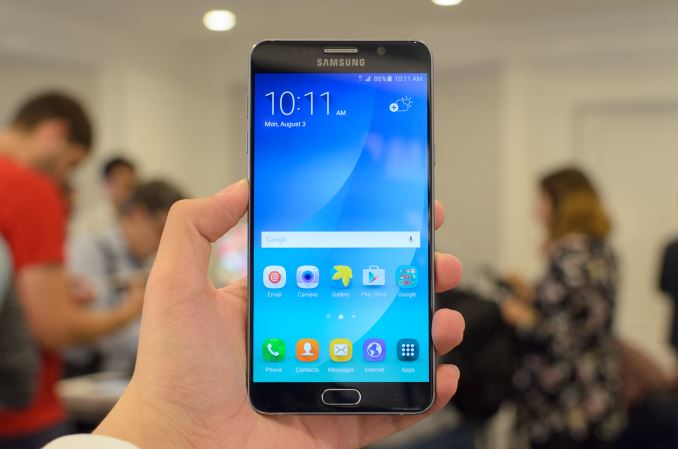
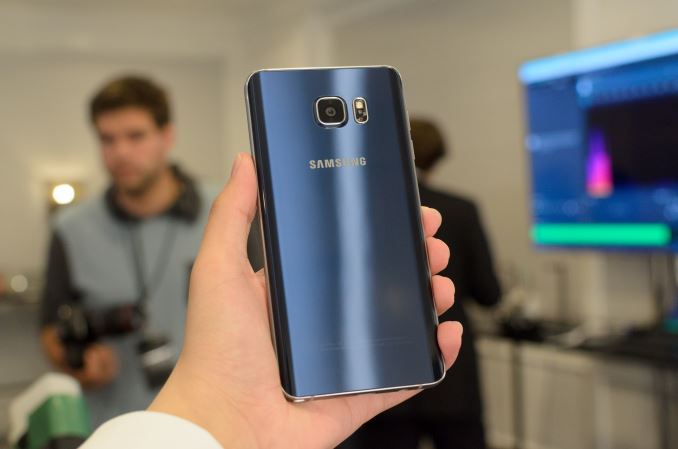
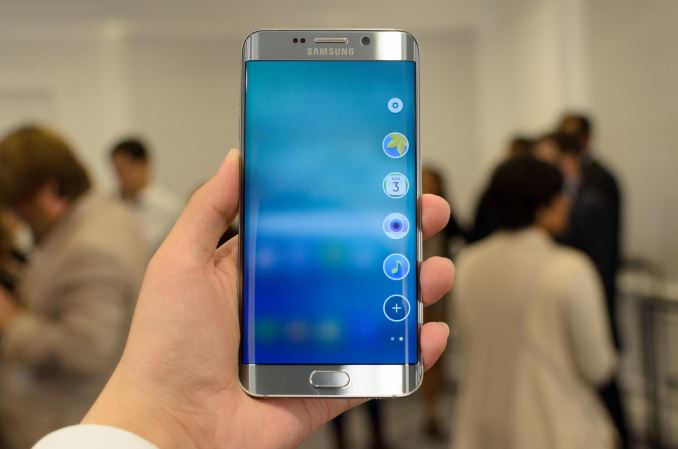
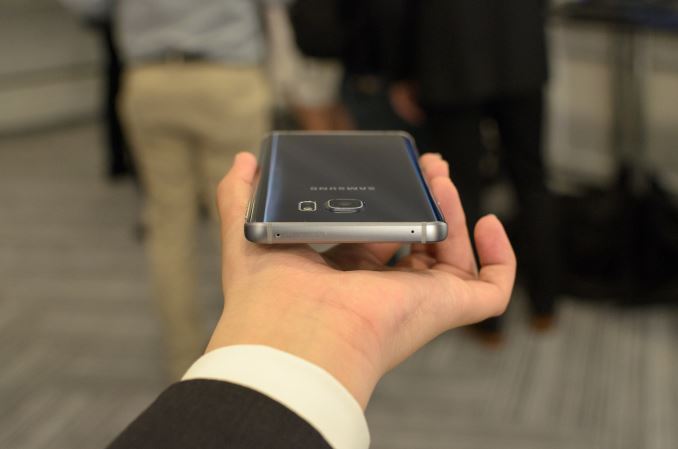

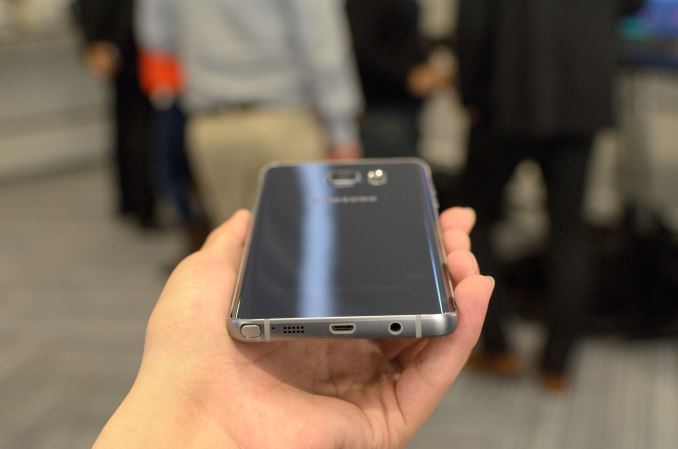
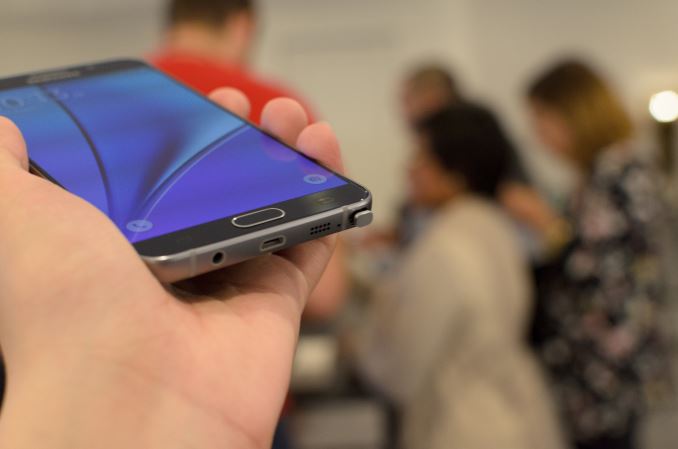
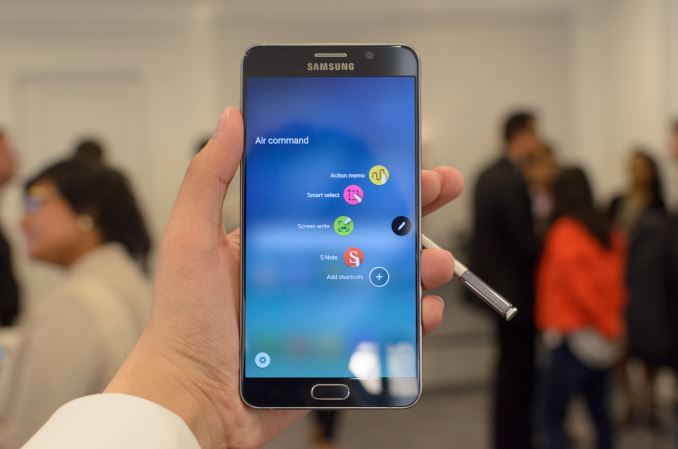
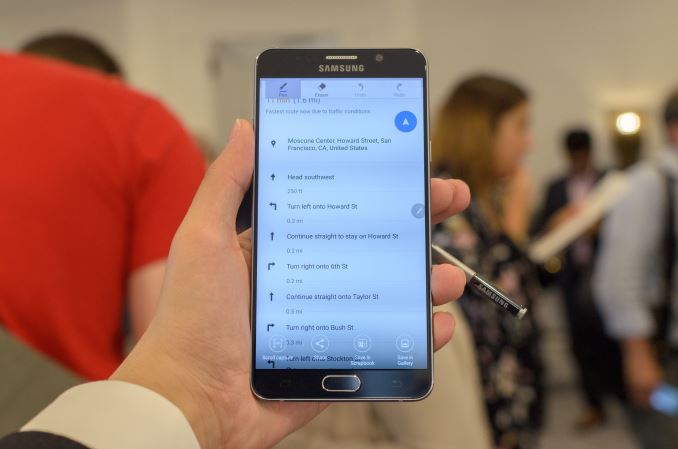
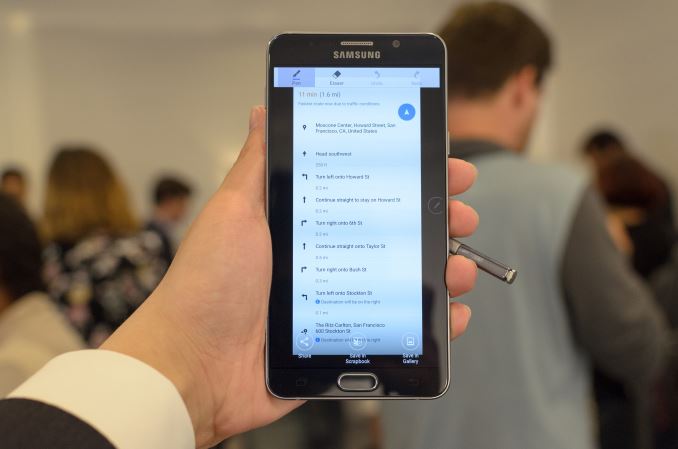


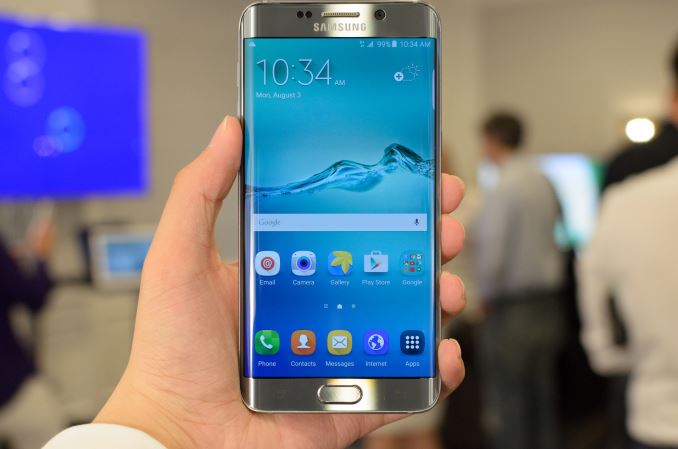
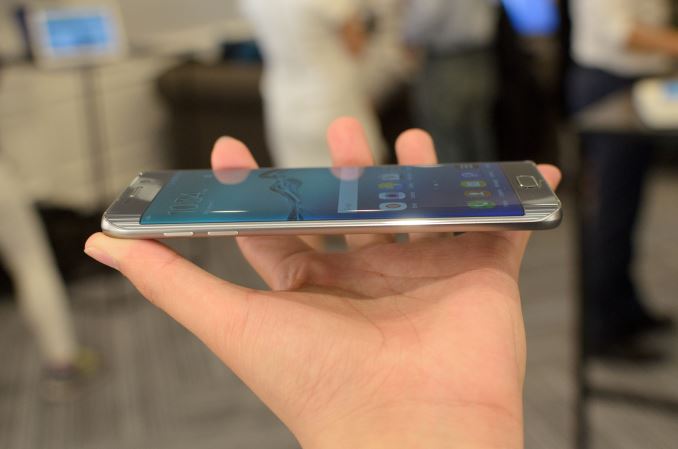
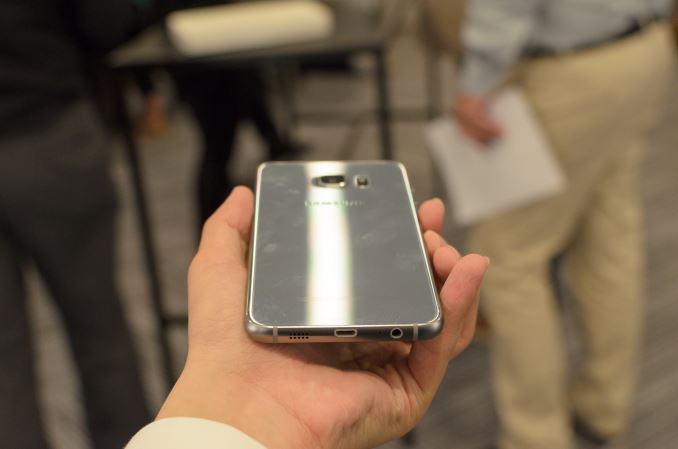
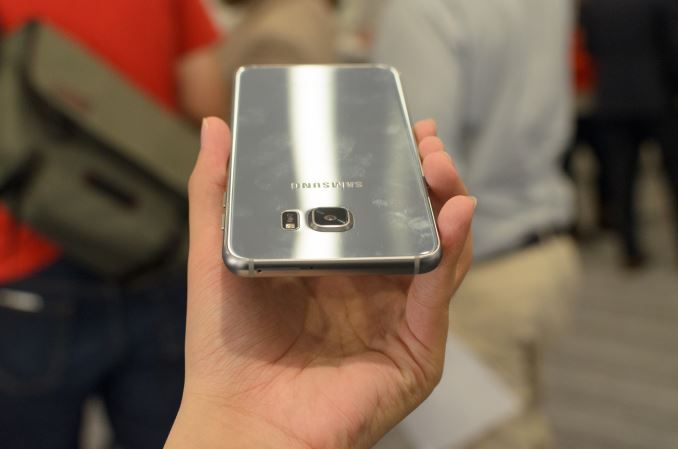
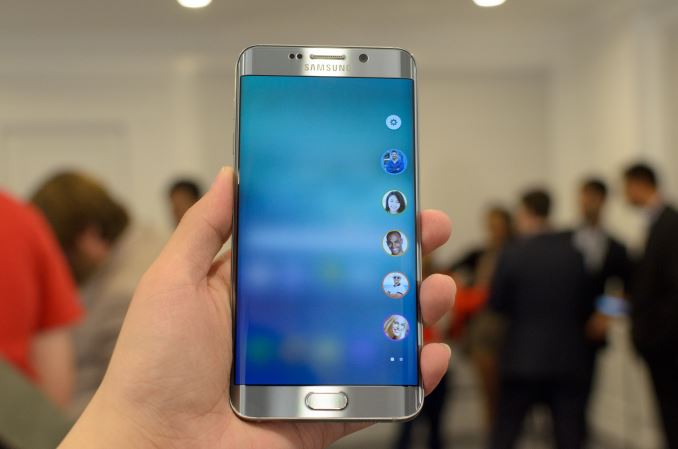








218 Comments
View All Comments
halcyon - Friday, August 14, 2015 - link
The battery is not SWAPPABLE. It maybe "buy this extra kit to pry open your phone and spend 30 minutes changing the spare part battery you hunted down from cheap China web site" replaceable.Also, as Verge correctly states, NO 128GB model (it was a fluke by Samsung).
Total flop and failure this model. No 7422, no cam upgrade, small battery (anybody who has used S6 Edge heavily knows it lasts half a day under heavy use scenarios) and too little memory and too high price.
I will eat my hat if Note 5 sells well (more than Note 4).
Samsung has lost the plot for now. Time for LG, Sony, Xiaomi and others to step up. There are lots of power users looking to switch right now.
mlkmade - Friday, August 14, 2015 - link
it clearly says "NON-REMOVABLE" battery on both phone's spec sheets.I am really happy with the note 4 I bought 3 weeks ago for $1. No external media/no removable battery = no go.
Istvan80 - Sunday, August 16, 2015 - link
It says non-removable (in the specs)CoryG89 - Tuesday, August 18, 2015 - link
It's not replaceable, it says right in the specs, non-removable. Both versions.Drumsticks - Thursday, August 13, 2015 - link
I really, really thought they'd keep the battery and MicroSD for their note line. Especially with the Edge+! Why not have one model that offers it and one that doesn't? Sure, it costs more now in engineering I bet, but by next year, they'd definitively know whether users want power or style with their phablets. They also could have easily upped the battery size if they were going non-removable - 4000 mAh or so would probably have been enough to be satisfied with the performance. Non-Removable batteries supposedly gain more volume, but that doesn't really seem to happen much. (Although the Note 5 is thinner than the G3, who cares? Add a couple mm and +20% battery).retrospooty - Thursday, August 13, 2015 - link
Yeah, I was really hoping the 4100mah rumors were true. Crap. I can live without SD or rem batt, but 3000mah in a 5.7 inch screen phone seems low.lilmoe - Thursday, August 13, 2015 - link
I'd wait for the reviews before judging battery life. But even if it was better than the Note 4, I'm also equally disappointed they didn't fit a larger battery regardless provided the size of the device.The Rogue Tomato - Saturday, August 15, 2015 - link
The Moto X Pure/Style has a 5.7" screen (LCD/IPS) and a 3000 mAh non-removable battery, too.Love the Angry Beaver name, "retrospooty".
jb958 - Thursday, August 13, 2015 - link
It seems like Samsung is confident enough that their new phone doesn't need that much power. As seen in this comparison between the Note 5 and its older sibling, the Note 5 has a much smaller semiconductor size which means it should in theory be able to do more work while using less battery power.LauRoman - Thursday, August 13, 2015 - link
Are those semiconductors in the screen or the LTE antenna? No? Well then it don't matter do it?